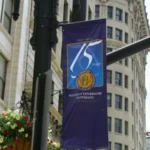The COVID-19 pandemic resulted in unprecedented federal student loan relief, including a payment pause on federal student loans. But that relief is ending, with payments set to resume by September 2023 at the latest.
As the end of the payment pause approaches, the Biden administration wants to ensure borrowers can successfully transition back into repayment. This is especially important for over 7 million borrowers who had loans in default prior to the pandemic.
To help these borrowers get back on track, the administration created the Fresh Start Program. Fresh Start offers borrowers a clean slate to reenter repayment in good standing.
In this guide, we’ll explain everything you need to know about Fresh Start, including:
- The benefits available
- Who qualifies
- How to enroll
- Repayment Planning
- Tips for avoiding default again
- What to do if you don’t qualify
- How to identify student loan scams
- Resources
Let’s get started.
Benefits of the Fresh Start Program
The main benefit of Fresh Start is getting federal student loans out of default and back into good standing. Here are some key benefits available:
Defaulted Loans Returned to Current Status
The biggest advantage is returning loans from default to their current status. This removes the default from your credit report and CAIVRS, the federal loan default database.
Having a default erased improves your credit and makes you eligible again for benefits tied to being current on federal student loans.
Credit Report Improvements
In addition to removing the default mark, the following credit reporting improvements occur:
- Any federal loan delinquencies over 7 years old are deleted
- If you default again after Fresh Start, the original delinquency date will be used, rather than restarting the 7-year period
These changes can increase credit scores for borrowers previously in default.
Access to Repayment Plans Like IDR
Once back in good standing, borrowers can enroll in income-driven repayment (IDR) plans. These base your payment on income and family size.
IDR plans include:
- Revised Pay As You Earn (REPAYE)
- Pay As You Earn (PAYE)
- Income-Based Repayment (IBR)
- Income-Contingent Repayment (ICR)
With IDR, payments could be as low as $0 per month. You can also qualify for loan forgiveness after 20-25 years of payments.
Deferred Collections and Wage Garnishment
Fresh Start pauses involuntary collections like wage garnishment and Social Security offsets through at least one year after the payment pause ends.
This provides immediate financial relief and time to get your loans current.
Borrower Eligibility for Fresh Start
To qualify for Fresh Start, you must have federal student loans that:
- Were in default prior to March 13, 2020
- Are eligible for the pandemic payment pause
Eligible loans include:
- Direct Loans
- ED-held FFELP loans
- ED-held Perkins Loans
Ineligible loans include:
- Private student loans
- School-held Perkins Loans
- FFELP loans in default after March 2020
Contact the Default Resolution Group at 1-800-621-3115 to verify your eligibility.
Over 7 million borrowers with approximately $35 billion in defaulted student loans qualify for Fresh Start.
How to Enroll in the Fresh Start Program
Fresh Start enrollment will be open for one year after the payment pause ends, expected by September 2023.
You must contact your servicer or ED’s Default Resolution Group to enroll and agree to a new repayment plan.
You can enroll by:
- Online – Log in to the myEDdebt portal and submit a Fresh Start request
- Phone – Call 1-800-621-3115. Have your income information ready.
- Mail – Write to P.O. Box 5609, Greenville, TX 75403 requesting Fresh Start
After enrolling, your loans will be assigned to a new servicer and returned to good standing. Ensure you update your contact information so you don’t miss critical updates.
Repayment Planning When Fresh Start Ends
When your year of deferred collections ends, you’ll need to be ready to repay your loans to avoid default again. Here are some tips:
Update Contact Information
Log into StudentAid.gov and your loan servicer website to update your mailing address, phone number, and email. This ensures you get essential information about repaying your loans.
Explore Repayment Plans
Enrolling in an affordable plan is key to avoiding default when payments restart. Your options include:
- IDR plans – Payments based on income, balance forgiven after 20-25 years
- Graduated repayment – Payments start smaller and increase over time
- Extended repayment – Stretches payments over 25 years
Download the Student Loan Repayment Checklist
Use the Repayment Estimator to find your best plan.
Request Deferment or Forbearance If Needed
If you will struggle to pay when your loans become due, immediately request:
- Deferment – Temporarily postponed payments due to hardship like unemployment. Interest doesn’t accrue on subsidized loans.
- Forbearance – Temporarily postponed or reduced payments due to hardship. Interest accrues.
Call your servicer to submit a deferment or forbearance request.
Avoiding Default After Fresh Start
Getting your loans back in good standing through Fresh Start is just the first step. You’ll also need to take proactive measures to avoid defaulting again once payments restart.
Here are some tips to stay current on your loans:
Set Up Auto-Pay
Enrolling in auto-pay is highly recommended to avoid accidental missed payments. With auto-pay, your monthly loan payment is automatically deducted from your bank account by your loan servicer.
According to the Department of Education, 96% of borrowers who used auto-pay between 2015-2020 did not default on their loans.
You receive a 0.25% interest rate reduction when you enroll in auto-pay as well. To get started, log into your loan servicer account and enter your bank account information under payment settings.
Seek Additional Relief Early
If you anticipate having trouble repaying your loans once the payment pause ends, immediately contact your servicer to discuss options.
Do not wait until you miss payments or default to ask for help. The earlier you take action, the more tools are available.
Two options to temporarily postpone payments are:
- Deferment – If you meet certain criteria, like unemployment or economic hardship. No interest accrues on subsidized loans.
- Forbearance – Available at the servicer’s discretion regardless of the situation. Interest continues to accrue.
Both provide short-term relief for up to 12 months to get back on your feet financially.
Consolidate FFELP Loans
If you have Federal Family Education Loan Program (FFELP) loans, consider consolidating them into a new Direct Consolidation Loan.
Benefits of consolidation include:
- Access to income-driven repayment (IDR) plans
- Ability to qualify for Public Service Loan Forgiveness (PSLF)
- Getting a new set of deferment/forbearance options
Consolidation can also rapidly get your loans out of default if you’ve used up your other options. The downside is it results in a new loan balance.
To learn more, visit StudentAid.gov/consolidation.
Staying current on your loans after Fresh Start ensures you keep access to benefits like IDR plans, loan forgiveness programs, and protections for your credit history. Act preventatively by setting up auto-pay, seeking help early, and consolidating FFELP loans.
What If You Don’t Qualify For Fresh Start?
If your federal student loans aren’t eligible for Fresh Start, you still have options to avoid default, such as:
- Rehabilitating loans – Make 9 on-time payments over 10 months. Removes default from your credit history.
- Consolidating loans – Combines loans into a new Direct Consolidation Loan. Gets you out of default quickly.
- Seeking deferment or forbearance – Postpones payments temporarily if you are experiencing financial hardship.
Don’t wait to take action if Fresh Start isn’t an option – contact your loan holder immediately to discuss plans to get your loans current.
Be Wary of Student Loan Scams
Beware of scams and misleading ads related to the Fresh Start program and student loan forgiveness. Remember:
- The Department of Education will contact you if you qualify for Fresh Start – you do not need to pay anybody to enroll.
- Never share your FSA ID.
- Don’t pay an upfront fee for help – legitimate counselors work for free.
- Scammers may pretend to be affiliated with the government – hang up if you suspect a scam.
Usually, when an offer seems too good to be true, guess what… it probably is. Get information directly from ED instead.
Get Help From Reputable Sources
Reliable sources for information and assistance include:
- Federal Student Aid Office – Call 1-800-4-FED-AID or visit StudentAid.gov
- Default Resolution Group – Call 1-800-621-3115 or visit myEDdebt.ed.gov
- Your assigned loan servicer – Log into your account or call the number on your statement
- An ED-certified student loan counselor – Visit StudentAidHelp.org
- Fresh Start Program Fact Sheet
Conclusion
The Fresh Start program provides a clean slate for federal student loan borrowers previously in default. Taking advantage of this opportunity and using repayment plans can help you manage your student loans and avoid default in the future.
Act soon – Fresh Start enrollment ends one year after the payment pause lifts, expected by September 2023.
Contact the Default Resolution Group today to confirm your eligibility and complete the enrollment steps.



